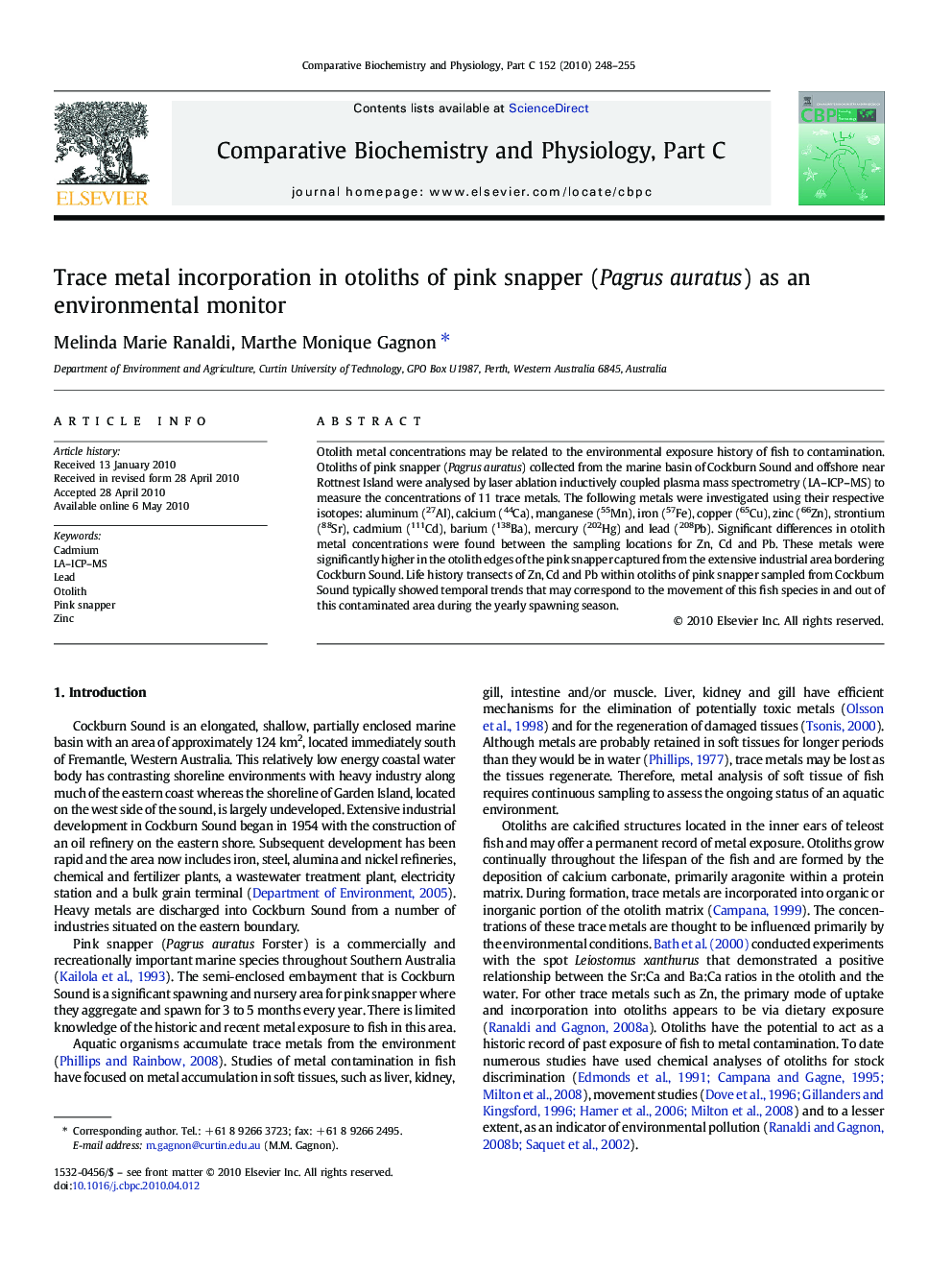| Article ID | Journal | Published Year | Pages | File Type |
|---|---|---|---|---|
| 1977603 | Comparative Biochemistry and Physiology Part C: Toxicology & Pharmacology | 2010 | 8 Pages |
Otolith metal concentrations may be related to the environmental exposure history of fish to contamination. Otoliths of pink snapper (Pagrus auratus) collected from the marine basin of Cockburn Sound and offshore near Rottnest Island were analysed by laser ablation inductively coupled plasma mass spectrometry (LA–ICP–MS) to measure the concentrations of 11 trace metals. The following metals were investigated using their respective isotopes: aluminum (27Al), calcium (44Ca), manganese (55Mn), iron (57Fe), copper (65Cu), zinc (66Zn), strontium (88Sr), cadmium (111Cd), barium (138Ba), mercury (202Hg) and lead (208Pb). Significant differences in otolith metal concentrations were found between the sampling locations for Zn, Cd and Pb. These metals were significantly higher in the otolith edges of the pink snapper captured from the extensive industrial area bordering Cockburn Sound. Life history transects of Zn, Cd and Pb within otoliths of pink snapper sampled from Cockburn Sound typically showed temporal trends that may correspond to the movement of this fish species in and out of this contaminated area during the yearly spawning season.
